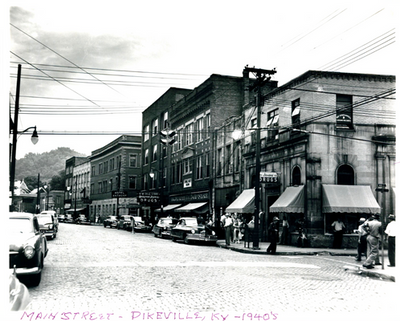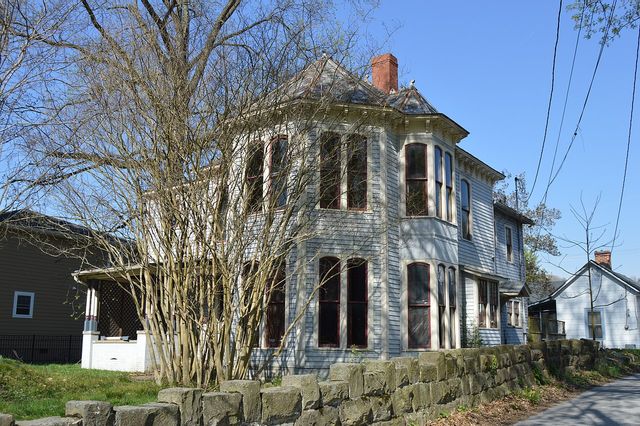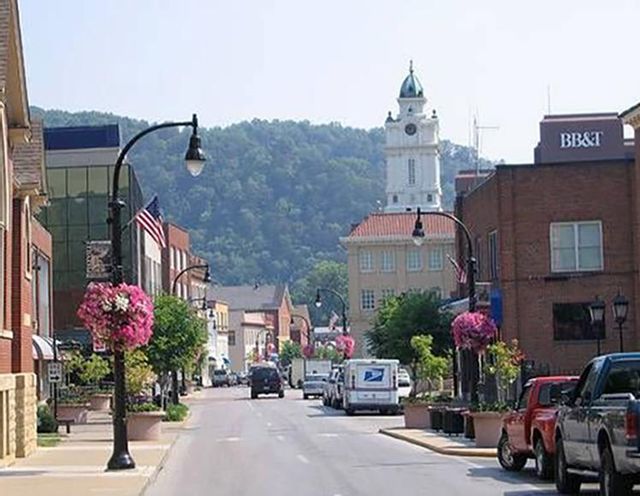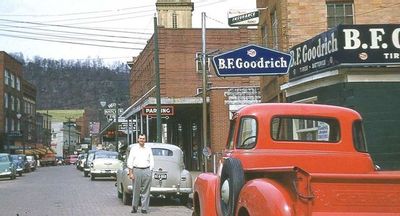
Historic preservation is more than saving old buildings—it’s about protecting the places that tell our stories, strengthening communities, and creating opportunities for revitalization.
Why It Matters
🏛 Preserves History – Protects buildings, sites, and landmarks that connect us to the past.
🏙 Revitalizes Communities – Repurposes and reuses existing spaces to benefit downtown areas.
💰 Drives Local Investment – Encourages property improvements and economic growth.
📜 Provides Incentives – Properties listed on the National Register of Historic Places may qualify for tax benefits and preservation grants.
Preservation & Main Street Revitalization
Historic preservation is at the heart of the Main Street approach, ensuring that commercial districts remain authentic and vibrant. By rehabilitating and adapting historic buildings, communities enhance property values, attract businesses, and create engaging public spaces.
Preserving the past builds a stronger future—one that honors history while fostering growth and renewal.

A National Historic Landmark (NHL) is a building, site, structure, or object officially recognized by the U.S. government for its outstanding historical significance.
📌 Did you know?
Out of 85,000+ places listed on the National Register of Historic Places, only about 2,500 have earned the prestigious National Historic Landmark designation.
What is a National Historic Landmark District?
A National Historic Landmark District is a designated historic district that has received the same high level of recognition. These districts may include:
✔ Contributing properties – Buildings, structures, sites, or objects that hold historical significance.
✔ Non-contributing properties – Structures within the district that do not meet the criteria for historical significance.
Fun Fact: Some contributing properties may also be listed separately as National Historic Landmarks!

A historic district is a group of buildings, properties, or sites recognized for their historical or architectural significance at the local, state, or federal level.
Key Facts:
✔ Varied in Size – Some districts have just a few buildings, while others include hundreds.
✔ Property Types – Buildings are classified as:
Federal Designation & Impact
🏛 Federally recognized historic districts are listed on the National Register of Historic Places through the National Park Service.
🌍 Preservation & Economic Growth – Historic districts help revitalize rural downtowns through programs like Main Street initiatives, attracting tourism and supporting local businesses.

Revitalizing downtown often starts with one building, one storefront, one improvement. Even simple updates—like restoring original details, repairing structures, or applying a fresh coat of paint—can inspire change and encourage surrounding property owners to follow suit.
The Impact of Façade Improvement Programs
A Façade Improvement Program is a community-driven initiative that provides financial incentives to property owners and businesses to enhance their building’s exterior. These programs often include:
✔ Matching grants or loans to help fund renovations
✔ Tax incentives for preservation efforts
✔ Design assistance to maintain historic character
Why It Matters
Façade improvement programs play a key role in downtown revitalization strategies and historic preservation plans. By making it easier and more affordable for owners to invest in their properties, these programs create a ripple effect—boosting curb appeal, increasing property values, and strengthening the local economy.
Is your business or property eligible for a façade improvement incentive? Learn more about available programs in our community!
Façade improvement programs do more than enhance aesthetics—they strengthen local businesses, attract customers, and boost the economy.
How Façade Improvements Make an Impact
✔ Increased Foot Traffic – Business owners often see more first-time customers after improvements.
✔ Higher Sales & Revenue – Commercial properties report increased sales and rental revenue in the year following upgrades.
✔ Stronger Local Economy – Improvements attract new businesses, shoppers, and investments to the area.
✔ Inspiring Change – Nearby businesses are often encouraged to update their own storefronts.
✔ Better Property Use – Renovated spaces are frequently converted to higher-value uses.
Why It Matters
A façade is more than just a building’s exterior—it shapes the character of downtown. By investing in improvements, businesses help create a vibrant, welcoming, and thriving community.

The 1874 Historic York House, located on Main Street in Pikeville, Kentucky, holds a unique place in American history. This Queen Anne Victorian home was not only a symbol of progress for its time but also the setting for the end of the infamous Hatfield-McCoy feud.
A Wedding Gift Turned Historic Landmark
The York House was originally built as a wedding gift from Colonel John Dils and his wife Ann to their daughter, Augusta, and her husband, James York. Augusta, a classically trained musician, brought music and culture to Pikeville, while James York went on to become an attorney, county treasurer, and Pike County Judge.
One of York’s most significant roles came during the later years of the Hatfield-McCoy feud (1887–1890). As the attorney for Randolph McCoy, he held strategy meetings in the front parlor of the home—where, according to family history, the feud was ultimately settled.
Preserving the Past: The York House Today
Recognizing the historical significance of the home, the City of Pikeville purchased the York House in July 2014 with plans to restore and preserve it as a cultural heritage center. In October 2015, the City of Pikeville, the Pikeville City Commission, and the Pikeville Main Street Program launched a community-based volunteer project to rehabilitate the house and honor the Dils/York family’s legacy.
A Piece of Living History
Now part of Pikeville’s Historic District and listed on the National Register of Historic Places, the York House remains a testament to the region’s rich past. Once the site of one of America’s most legendary conflicts, it now stands as a symbol of reconciliation, preservation, and local heritage.
The Historic York House is more than a building—it’s a window into Eastern Kentucky’s past and a reminder of the events that shaped the region.